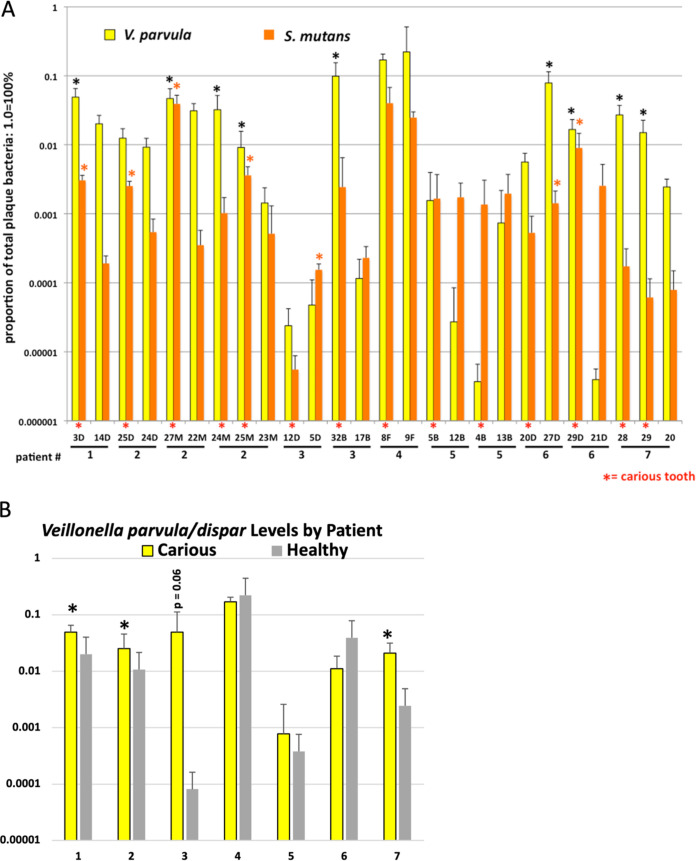FIG 3.
qPCR analysis of S. mutans and V. parvula/dispar in plaque-isolated DNA from seven root caries patients (n = 6 to 8). Given previous studies suggesting Veillonella species can be associated with increased caries risk or lower caries risk (20, 21), we sought to assess Veillonella levels in our root caries samples. In 8 out of 9 cases where one tooth was more highly colonized by Veillonella (shown with an asterisk), that tooth was carious. Furthermore, in 5 out of 8 cases, that higher level of Veillonella was associated with an increased level of S. mutans (shown with an asterisk). Data were analyzed by paired-tooth analysis (A) or as aggregates of carious or healthy teeth in each patient (B). *, P ≤ 0.05 by Student’s t test (A) and Mann-Whitney test for multiple teeth (B). Student’s t test was used in panel B if only one carious and one healthy tooth was present in the patient (patients 1 and 4).

